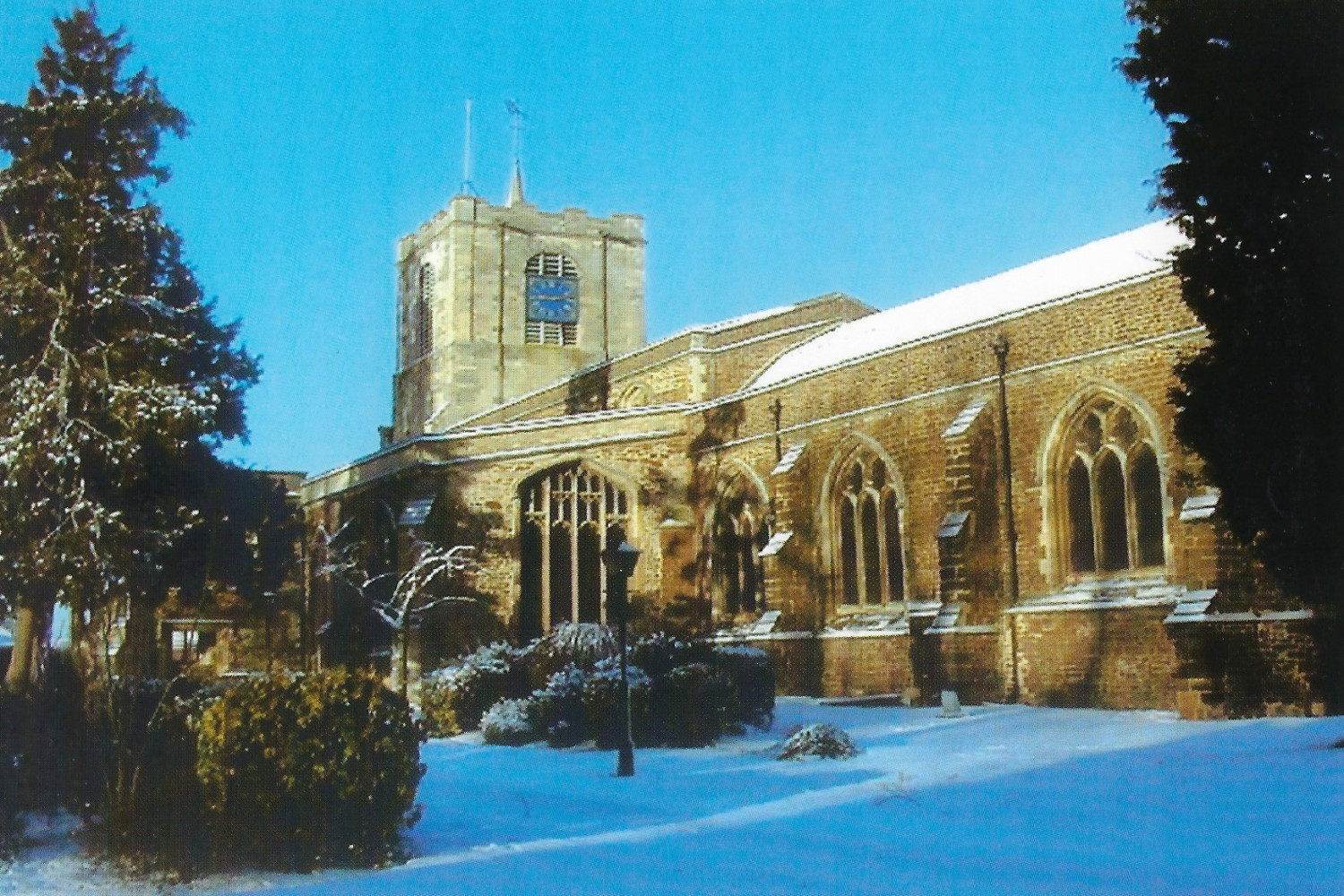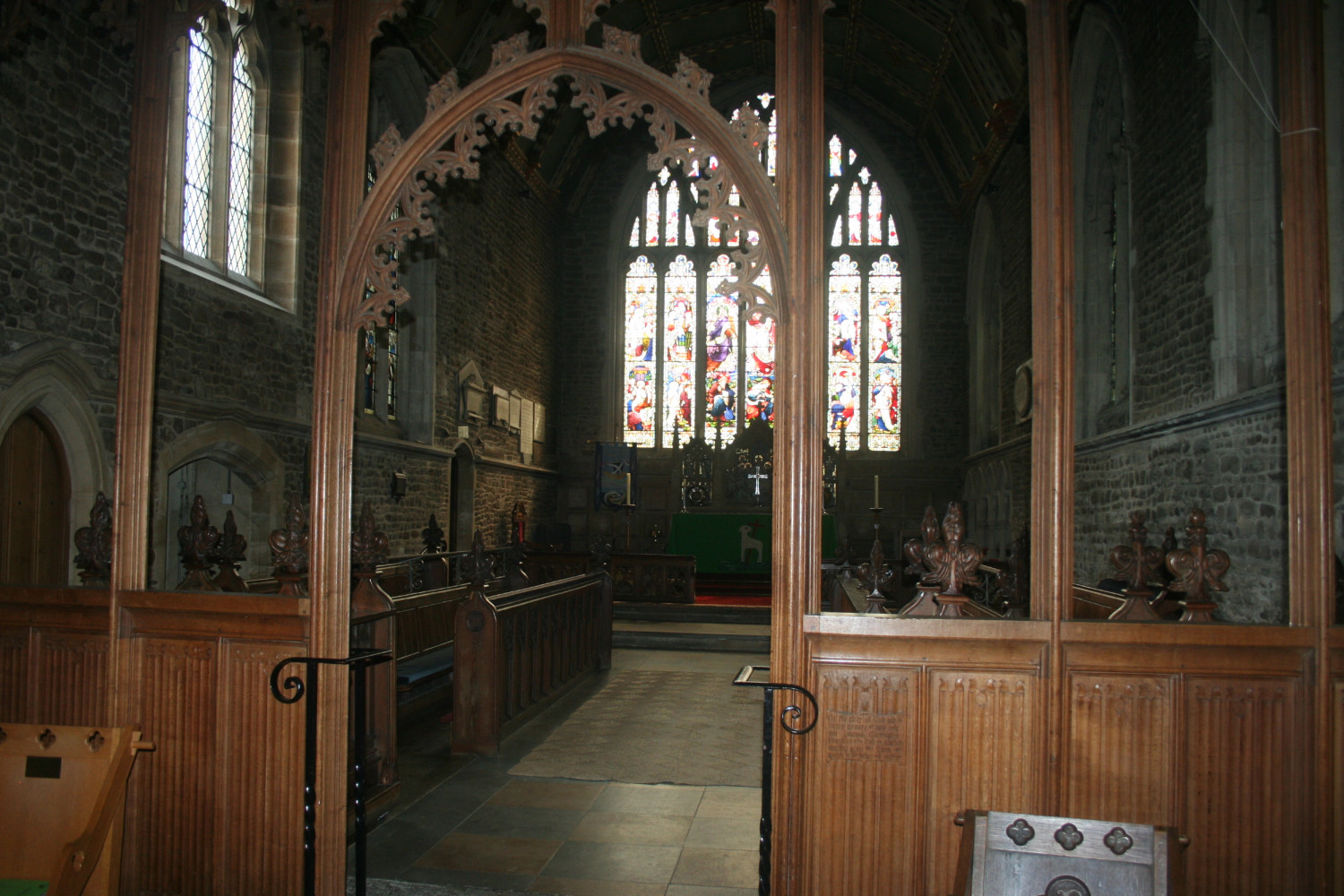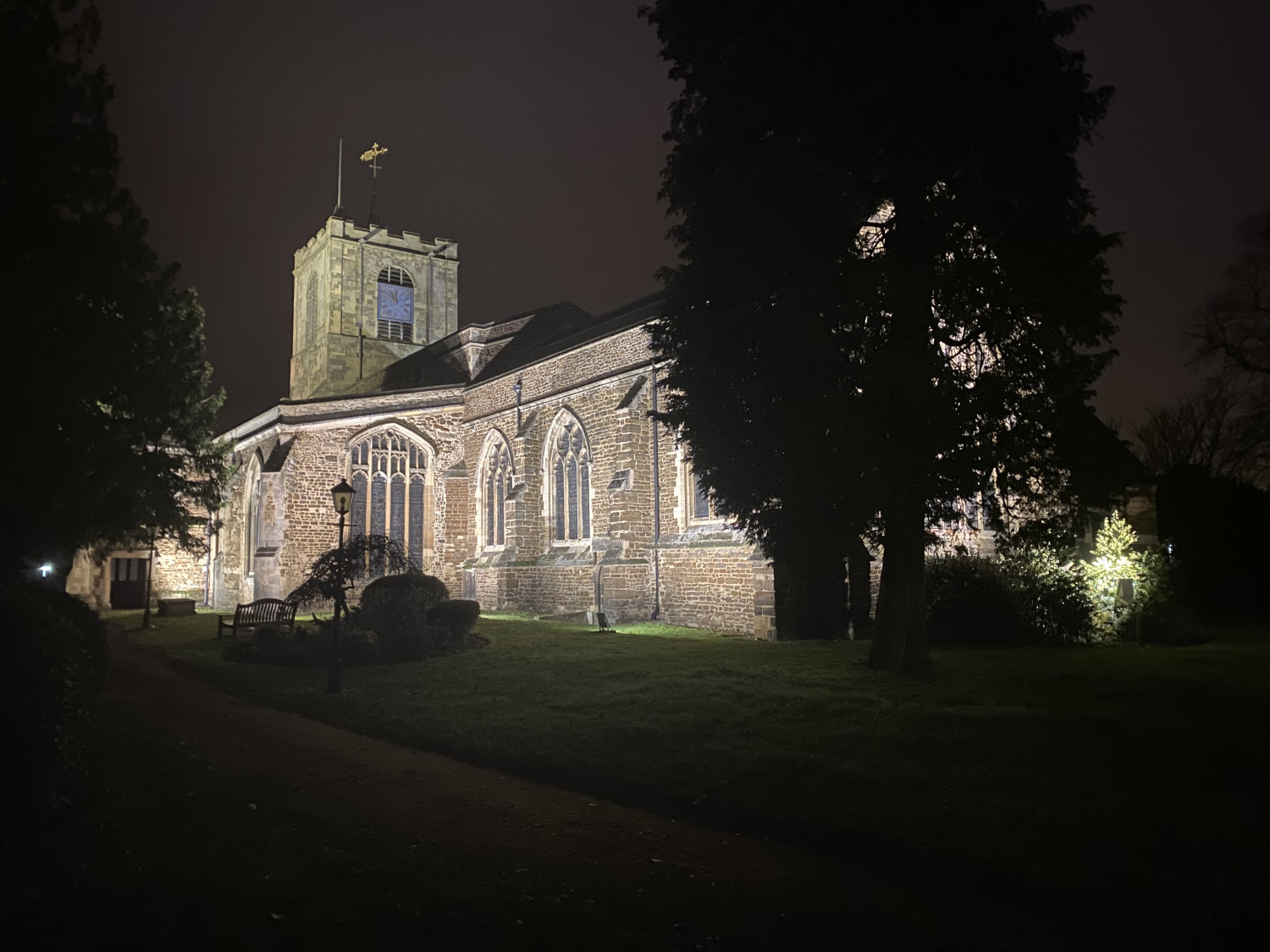The History of the Church
The first Vicar of Biggleswade , Walter Justis, was appointed in 1276, but it is probable that a tiny church (the town’s population was 200) existed already. Succeeding centuries saw its gradual extension with the addition of the south porch, the nave, chancel, aisles and the tower. Its history has been a chequered one as is the case with most churches – periods of decline as in the 18th century and great resurgence as in the 19th. Now the church building is in excellent order thanks to the efforts of the Friends of St Andrew’s who since 1985 have raised £500,000 and have met the cost of restoring the tower, south porch, bells, organ, tower clock, much stonework and have installed new entrance door and disabled access.

- The First Vicar was Walter Justis, 1276
- Earliest, tiny church predated his arrival
- Building extended over the centuries
- The Church has had periods of decline and resurgence
- The excellent condition of the building due to efforts of the Friends of St Anrew’s
Church History
It requires a great leap of the imagination to picture Biggleswade as it was 800 years ago, in the 13th century. Population 200 to 300 at most, living in poor cottages around what is now the market square. Most were serfs, their service tied to the Lord of the Manor.
It was to that poor community that the Bishop of Lincoln sent our first resident priest, Walter Justis, in 1276. Previously the church had been served by itinerant (or travelling) priests, not all of whom could read or write.
It is probable that a church building pre-dated Walter’s arrival, consisting only of what is now the eastern end of the south aisle, roughly from the memorial altar to the present north door with only open slits in the walls serving as windows, rushes scattered on the floor and no seating.
The 14th century witnessed truly significant enlargements – the building of the nave and the extension of the original building westwards adding the area which now houses the font. The exact joining place can be seen by looking up to the double beams in the ceiling.
Of great interest is the creation of the south porch and the ‘priest’s room’ above. This delightful stone floored room, accessed up a narrow winding flight of stone stairs was the first home for the priest. It had a small fireplace and a recess in a wall for a bad.
All this was made necessary by population growth and increasing prosperity, but which came to a sudden and catastrophic end by the plague – the Black Death – of 1348 and 1349. In common with so my parishes country wide the incumbent, Hugh Frankelyn, fell victim of the disease which killed between a third and a half of the nation.
 We move on to the 15th century and to John Rudying, the most important person in St Andrew’s history – its greatest benefactor. He personally met the cost of reconstructing the chancel, making it higher and longer than the nave, the roof of which was raised. Finally he created his burial space, with an elaborate brass, beneath the floor of the chancel. Strangely, however, he was not buried here but at Buckingham.
We move on to the 15th century and to John Rudying, the most important person in St Andrew’s history – its greatest benefactor. He personally met the cost of reconstructing the chancel, making it higher and longer than the nave, the roof of which was raised. Finally he created his burial space, with an elaborate brass, beneath the floor of the chancel. Strangely, however, he was not buried here but at Buckingham.
The most significant event in the 17th century was the collapse of the tower (or ‘steeple’ as it was called then – so was it a spire, not a tower? Together with two aisles. This was in 1687. The first signs of increasing neglect and apathy which characterised much of the Church of England at that time is shown by the fact that nothing was done to restore what must have been a very cold, ruinous church until 1720. Inside the walls were covered in moss, most of the carved angels over the south aisle had been sold to Cockayne Hatley, where they can still be seen. The Torrington Diaries called it an ‘ice-house’. Another traveller said ‘It makes the heart ache to look upon churches like that at Biggleswade’. The congregation was notorious for ‘indecorum’, the old stone font had been thrown into a corner.
But within a few decades the church here, and nationally, had been revitalised, so much so that a daughter church – St John’s – had to be built to hold a swelling congregation and the parish church had been rearranged so as to hold a thousand. Galleries were erected, stained glass windows installed and the whole building re-roofed. A great restoration in 1870 cost £3000. And so it was that when a local newspaper conducted areligious census in 1904 it found that in a town of 5120 there had on one Sunday been a total of 4500 attendances in the town’s churches and chapels – evensong at St Andrew’s attracted 305!
Then the two World Wars, social pressures, new leisure activities, cinema, radio, television, the motor car, Sunday sport, Sunday shopping, increasing indifference towards religion have had their effect, even upon the layout of the church which can now hold only 350. St John’s church was closed in 1973.
And yet the fabric of the building has never been in better order. A new screen was erected in memory of the son of a churchwarden, killed in the First World War. Many improvements followed after a disastrous fire in 1953.
In this respect much is owed to the Friends of St Andrew’s, who by raising £500,000 since their formation in 1985, have financed the restoration of the tower, the south porch, the tower clock, the bells, the organ and the provision of fine new entrance doors and disabled access. It is therefore their hope that every member of the church family will join the Friends – they need such support.
Should you wish to read more you will find illustrated booklets entitled ‘Biggleswade Parish Church, the Building and its Story’ on sale price £3 in church.
